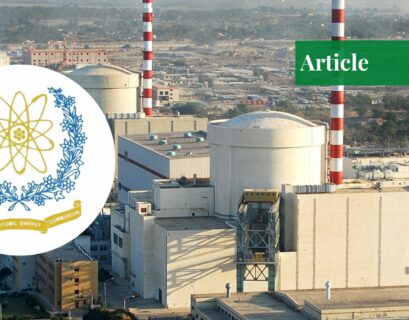Introduction
Unprecedented load shedding in South Africa has resulted from the frequent, large-scale power plant failures, with scheduled blackout periods for homes and businesses lasting up to 10 hours per day at times. The most industrialized country in Africa is predicted to have a 0.3% economic growth this year as a result of the power outages.
Several factors have contributed to the energy crisis in South Africa such as an outdated and badly maintained fleet of coal power plants, shoddy electricity infrastructure, insufficient investment in additional power generation capacity, and poor management by Eskom, the government-owned primary electricity supplier.
Eskom’s Collapse
The state-owned monopoly, Eskom, was founded in 1923 during the apartheid era and used a grid system that was intended to serve the nation’s white minority. Eskom is in charge of overseeing all phases of energy provision in South Africa, from generation to distribution. Around 95% of the country’s electricity is provided by it.
Its old and inadequately maintained plants are unable to meet demand since at least one-third of its power stations are either damaged or shut down for repair. The utility has a history of significant financial losses, poor planning, and accusations of mismanagement and corruption.
The apartheid government constructed filthy power plants between the 1960s and 1990s in the hopes that industrialization would be sparked by cheap electricity. As the reign of the white minority in South Africa came to an end in 1994, Eskom was not ready for the sudden rise in demand when it had to supply electricity to the more than two-thirds of black households that had not previously been connected to the grid.
Political influence and inconsistent government decision-making plagued Eskom for the next two decades. Regular interruptions in the electricity supply were caused by a lack of generating capacity. Since 2007, there have been 14 leaders at the company, and most of that turnover occurred under South African President Jacob Zuma’s nine-year tenure.
When capacity was exhausted in 2008, Eskom began to implement load-shedding. To make up the difference, 4,800 MW of power from two enormous coal-fired power plants, Medupi and Kusile, had to be added to the grid. Yet, the construction is three times over the budget and years behind schedule. For more than ten years now, the crisis has left the state-owned Eskom, the only electricity provider, financially devastated amidst widespread looting and corruption.
Recent Power Outages
The energy crisis in South Africa grew dramatically in 2022, particularly in the latter half of the year. Electricity outages lasted 3,775 hours over 205 days in 2022. According to research by the CSIR’s Energy Research Centre, Eskom’s energy availability factor (EAF), a gauge of plant performance, achieved a record low in 2022 and is off to a bad start in 2023.
Water services because of the inability to operate pumps without electricity and hospitals’ ability to give treatment have all been impacted by Eskom’s purposeful outages, which have frequently lasted for many hours. These blackouts are eroding corporate confidence in a nation whose largest industries, including mining, depend on dependable access to affordable power.
This load-shedding is to prevent a total collapse of the grid, but the economic growth estimates and investors’ confidence in the economy has been revised downward as a result of South Africa’s inability to meet its electricity needs. Eskom’s EAF has not yet shown any signs of stabilizing, making it difficult to predict when South Africa would likely end its current electricity supply crisis.
State of Disaster
Cyril Ramaphosa, the president of South Africa, recently declared a “state of disaster” as a result of the nation’s electricity crisis. This comes after the last disaster declaration, which was made in March 2020 in response to the coronavirus pandemic. At that time, the government was able to expedite spending and reduce red tape.
The officials intend to purchase up to 500 megawatts (MW) from commercial energy providers by 2026 to meet the city’s yearly electricity needs of 1,500–1,800 MW. The government is also considering providing financial incentives to consumers to reduce their consumption of electricity during times of peak demand and to remove barriers to investing in energy supplies outside of the defunct Eskom power monopoly.
According to Ramaphosa, the declaration of a “state of disaster” will allow the government to exclude vital infrastructure from load shedding, including hospitals and water treatment facilities. A national disaster declaration also gives the government more authority to respond to a crisis, including the ability to use expedited and less regulated emergency procurement processes.
Ramaphosa’s administration has already implemented bold policy measures to unleash private power generation independent of Eskom, but analysts and investors have cautioned that results won’t be seen for years.
Although the disaster status may not end the power outages, according to energy experts, it would enable the government to do away with a drawn-out procurement process and speed up coordination between various government agencies and stakeholders. Also, it can eliminate the legal and public participation procedures that are often necessary for new laws.
A nationalised central tendering procedure might also result in a rapid uptake of solar in public sector facilities including hospitals, schools, and municipal structures. The government is considering financing plans to make solar panels more widely available as well as ways to speed up the project awarding process.
Conclusion
Numerous policy instruments that would guide Eskom towards sustainability need to be put into practice and measures, such as boosting investments in renewable energy, speeding up the acquisition of new power generation capacity, restructuring Eskom to increase its efficiency and financial viability, and providing incentives for people and businesses to generate their own electricity. Yet, the energy crisis continues to be a serious problem for South Africa, and a lasting solution is probably years away.
If you want to submit your articles, research papers, and book reviews, please check the Submissions page.
The views and opinions expressed in this article/paper are the author’s own and do not necessarily reflect the editorial position of Paradigm Shift.


















